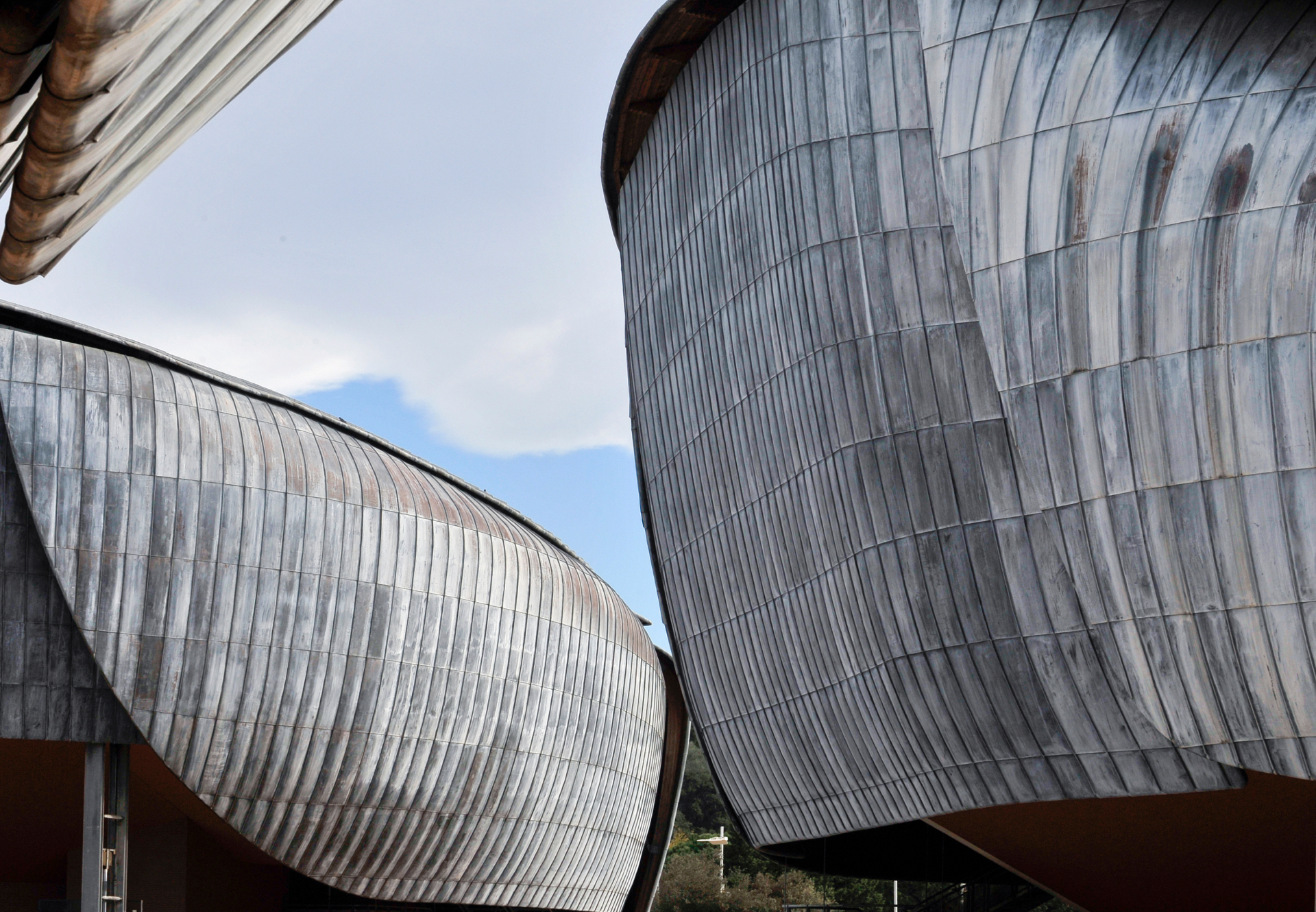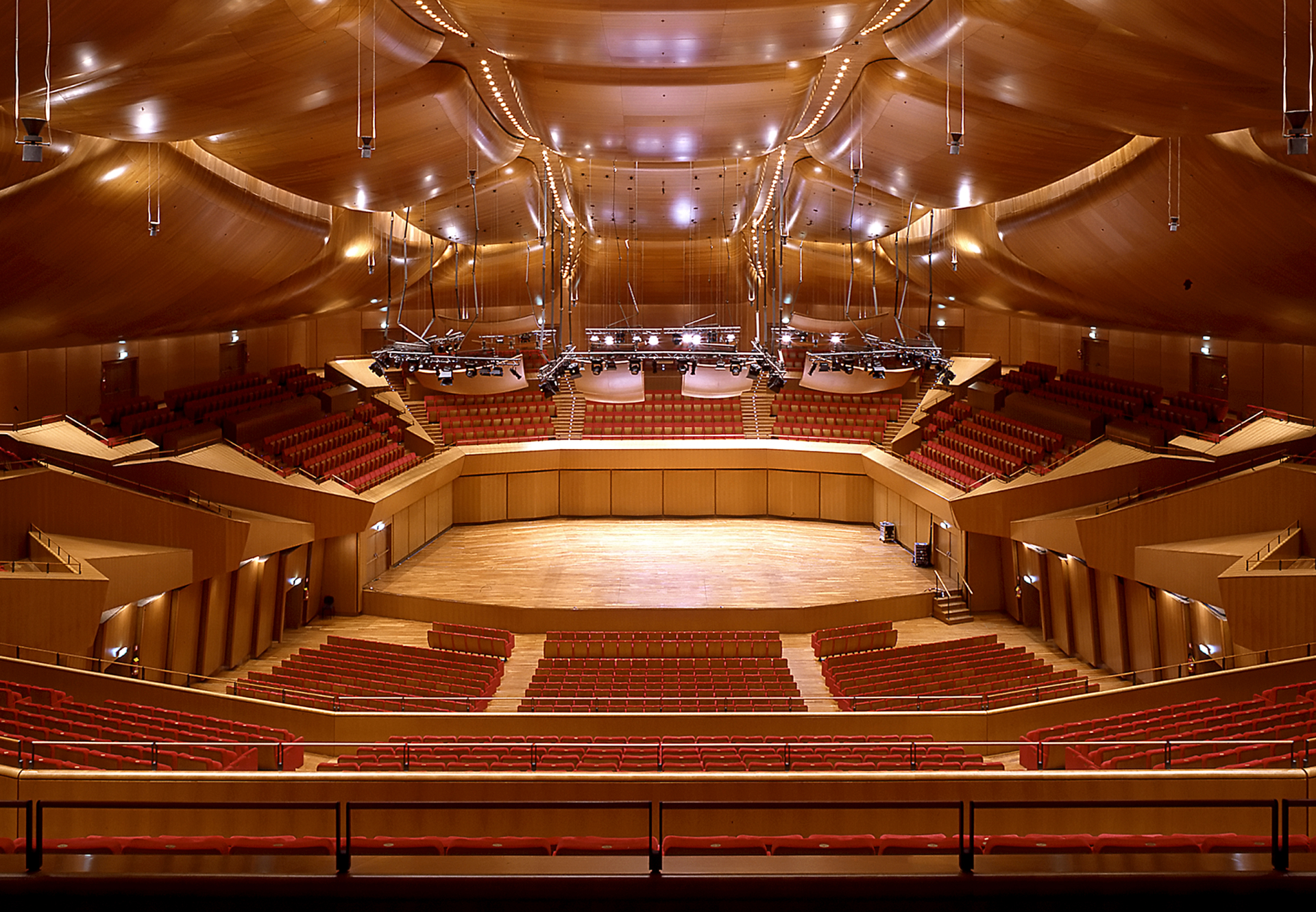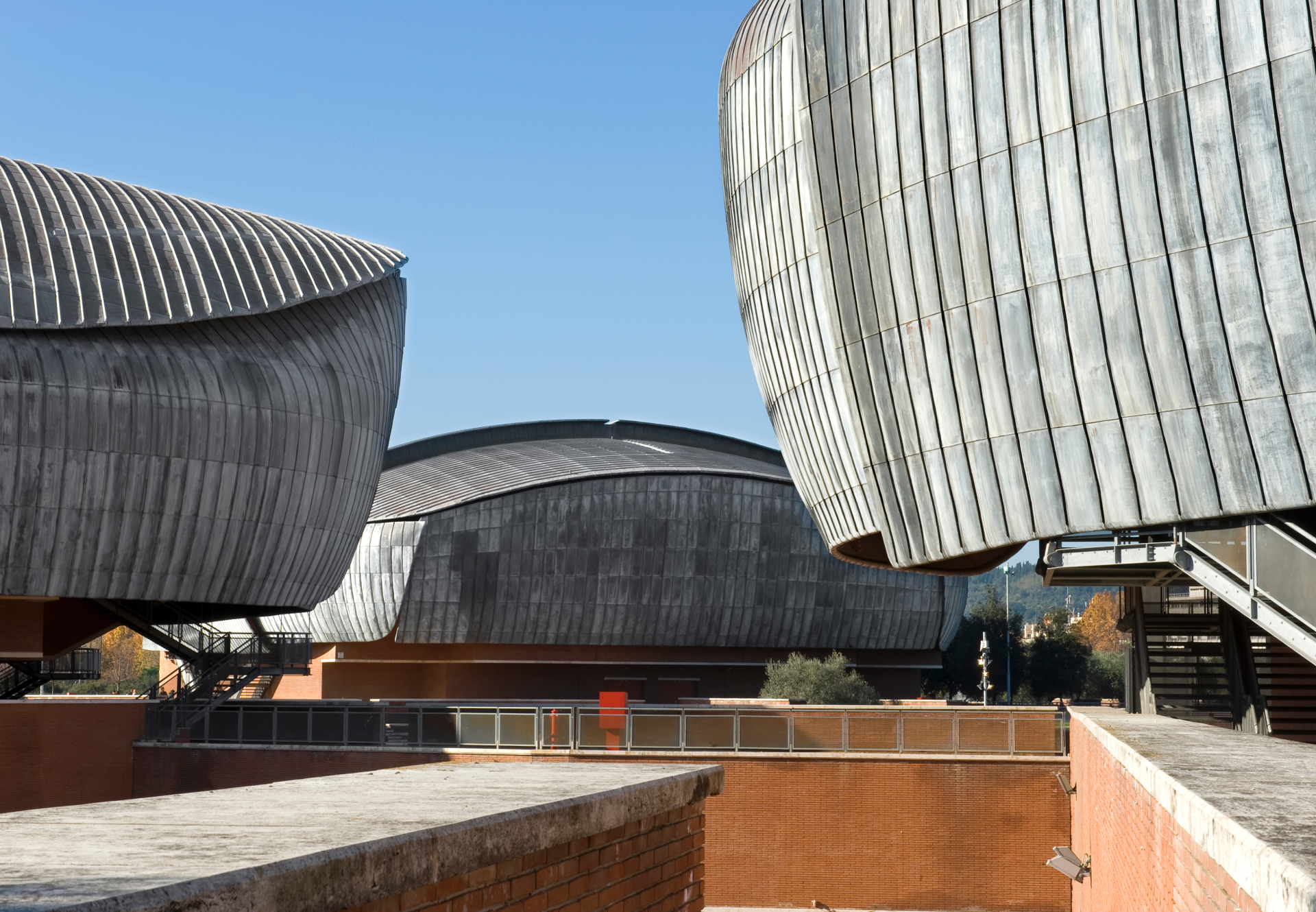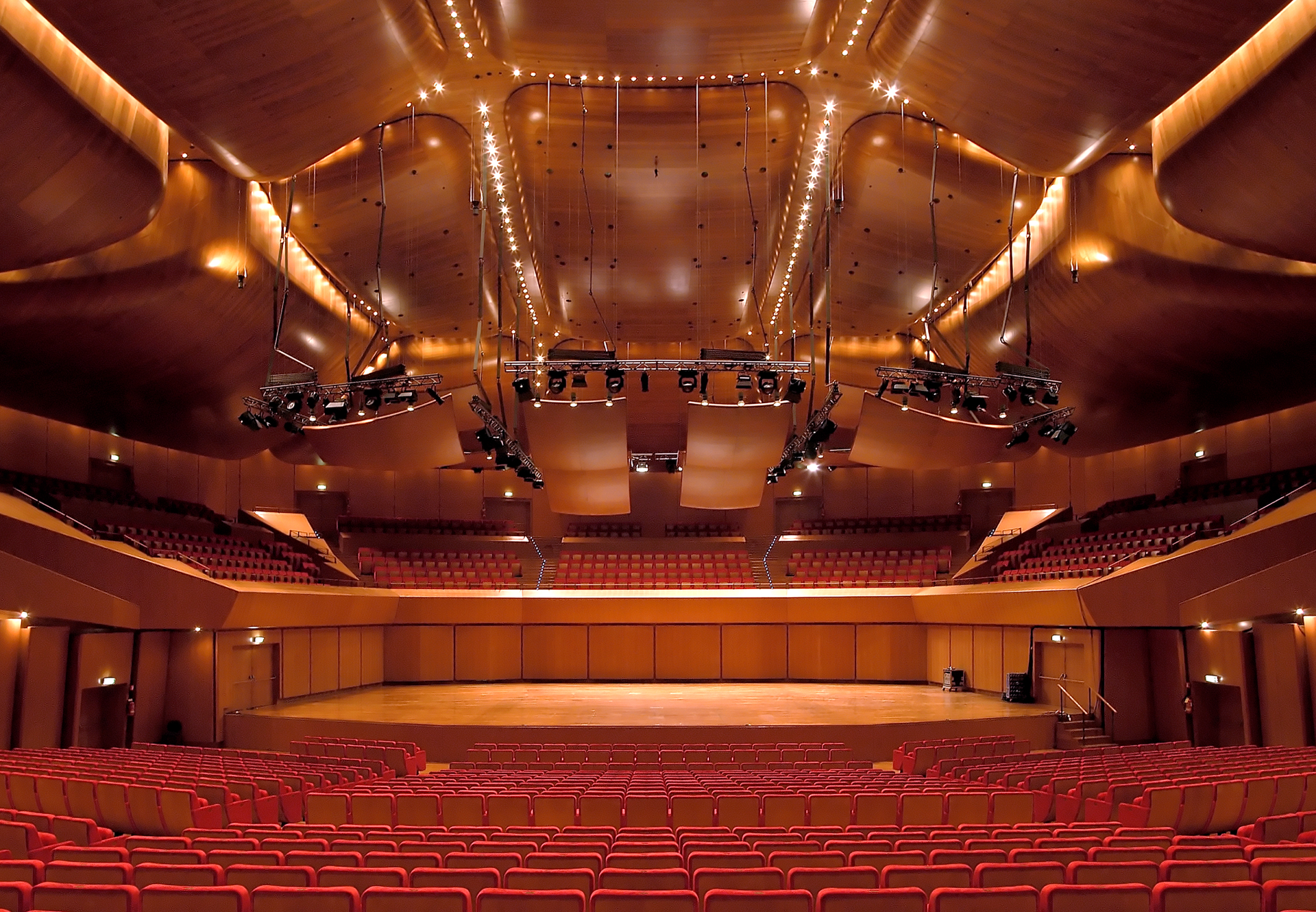
The Auditorium Parco della Musica is a multifunctional cultural complex built for the city of Rome. Located in the Flaminio district, in a strategic area between the Villaggio Olimpico and Pier Luigi Nervi’s Palazzetto dello Sport, the project was conceived to host a wide range of musical and cultural events.
The design is organized around three independent concert halls, arranged in a fan-shaped layout around an open-air cavea with 3,000 seats. The three halls, each differing in capacity and acoustic characteristics, are architectural containers that formally evoke the soundboxes of musical instruments, clad in lead panels and surrounded by the greenery of the adjacent park. The Sala Santa Cecilia (2,800 seats) hosts symphonic concerts; the Sala Sinopoli (1,200 seats) is designed for chamber music and dance performances; and the Sala Petrassi (750 seats), particularly flexible, accommodates a variety of theatrical and musical events. Conceived as independent instruments, the three halls ensure optimal acoustic quality and functional flexibility, while integrating seamlessly with a network of shared indoor areas and outdoor paths.
During the excavation phase, the remains of a Republican-era Roman villa were discovered, leading to a significant revision of the original design. The archaeological site was preserved and incorporated into the complex, with the creation of an archaeological museum located beneath the cavea.
In addition to the concert halls, the complex includes rehearsal rooms, recording studios, commercial areas, and the headquarters of the Fondazione Musica per Roma and the Accademia Nazionale di Santa Cecilia.







